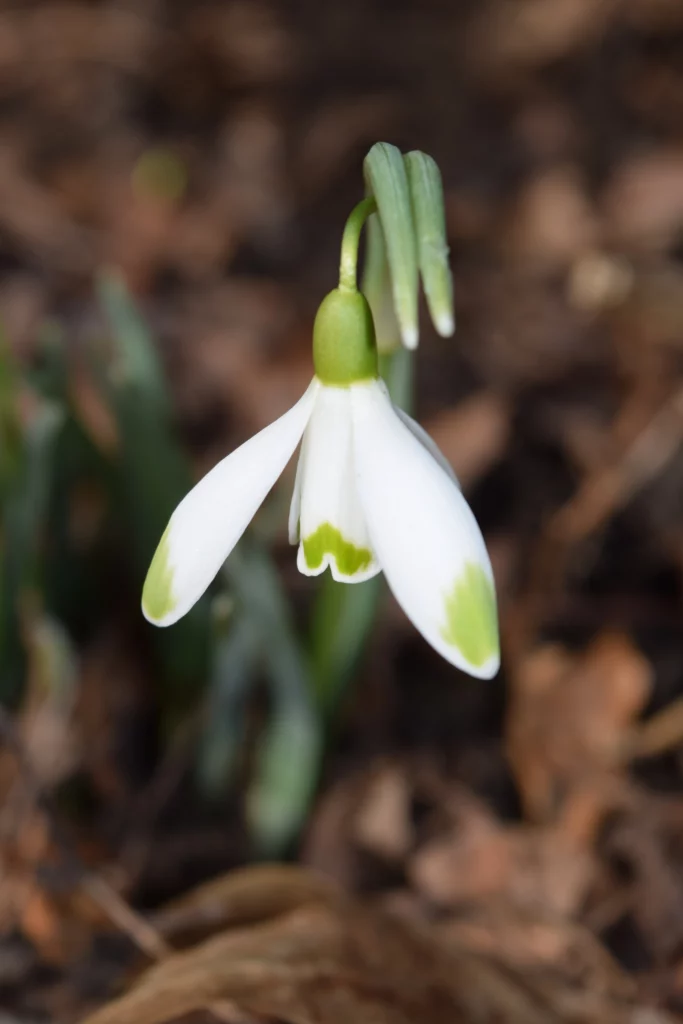
An Enchanting Winter Flower – Snowdrop – Galanthus
Gardening Quote for February
Snowdrops – ‘The more species and varieties you grow, the more you come to appreciate their finer details and differences, whereas those who are strangers to the subject think that all snowdrops are alike, even taking offense if is suggested that they are not.’ (page 119)
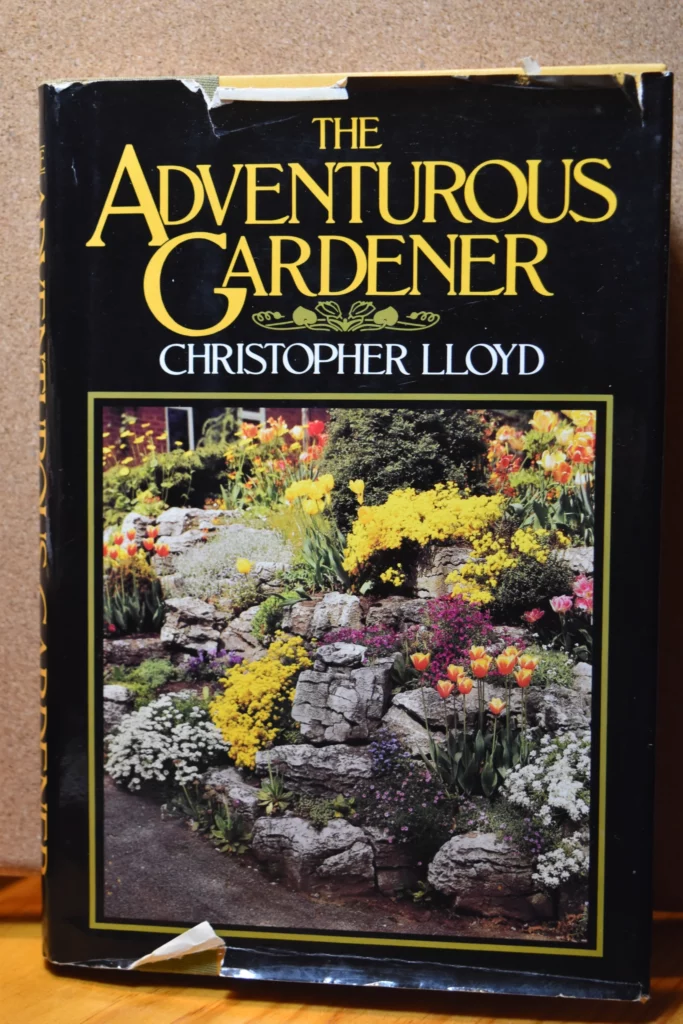
Christopher Lloyd, The Adventurous Gardener. First American Edition, Random House, New York, 1983.

Snowdrops bloom in the cold months of the year – like this Galanthusnivalis ‘Viridapice’ with extra green markings on the outers.
I have to admit that February is not my best-loved month but luckily it is a short one. The cold weather and brief gardening days make it rather a trial and I am always glad when March rolls around. One bright spot in the garden is that I can obsess about my snowdrop collection. I always hope that the weather will cooperate, and not cover my little snowdrops in snow for the whole month. I go outside and peer at each clump of nodding white bells to see what has just opened and what might be new and different.
Snowdrop Slideshow – 10 images click through below
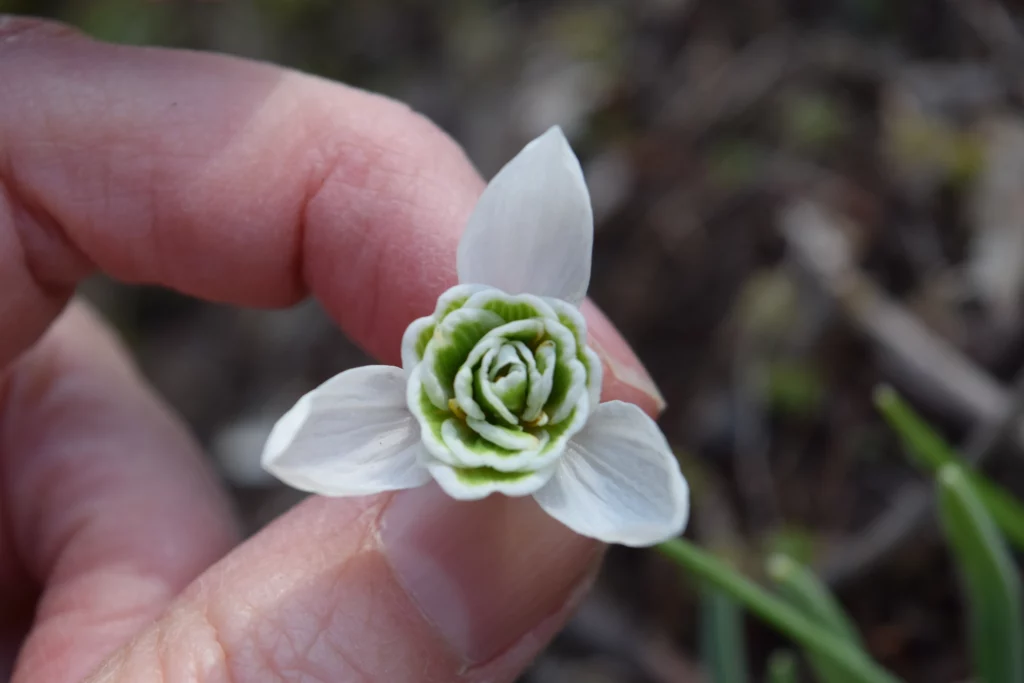
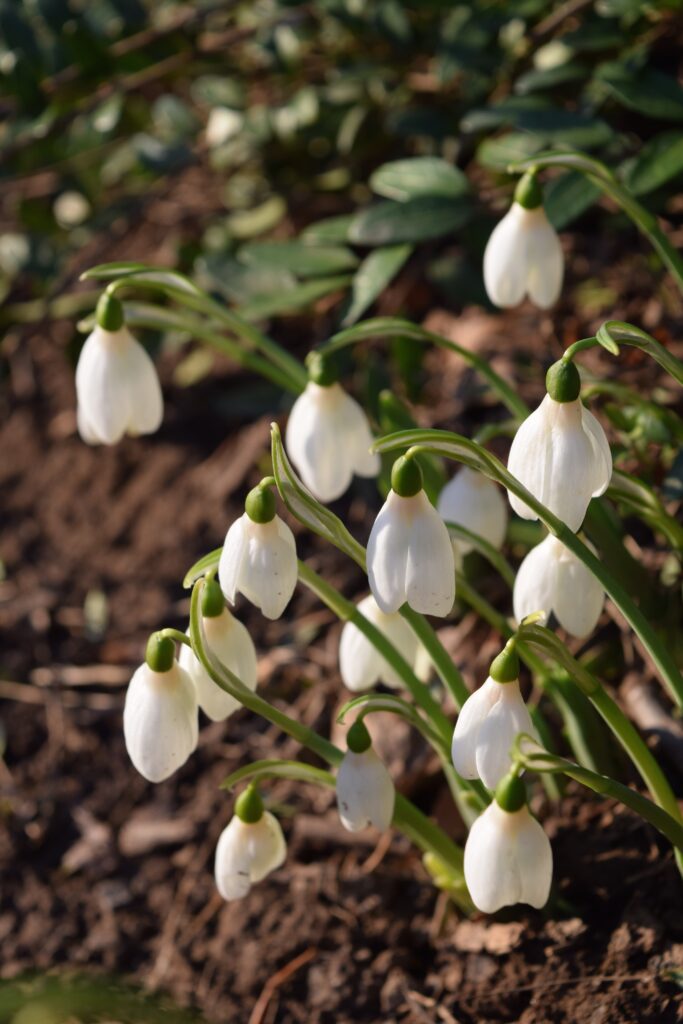


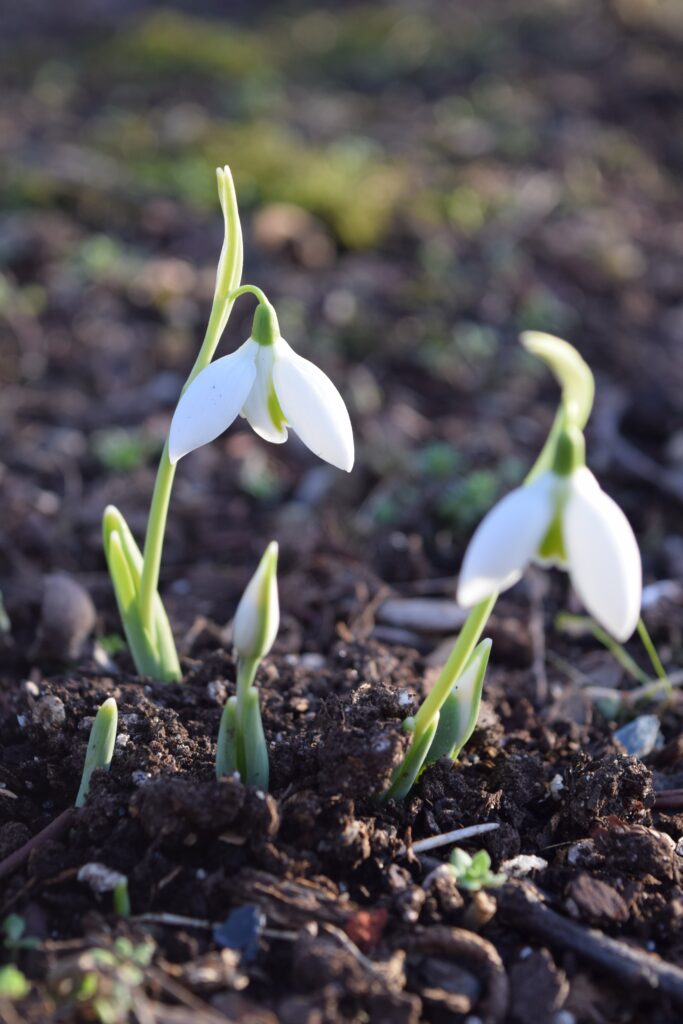
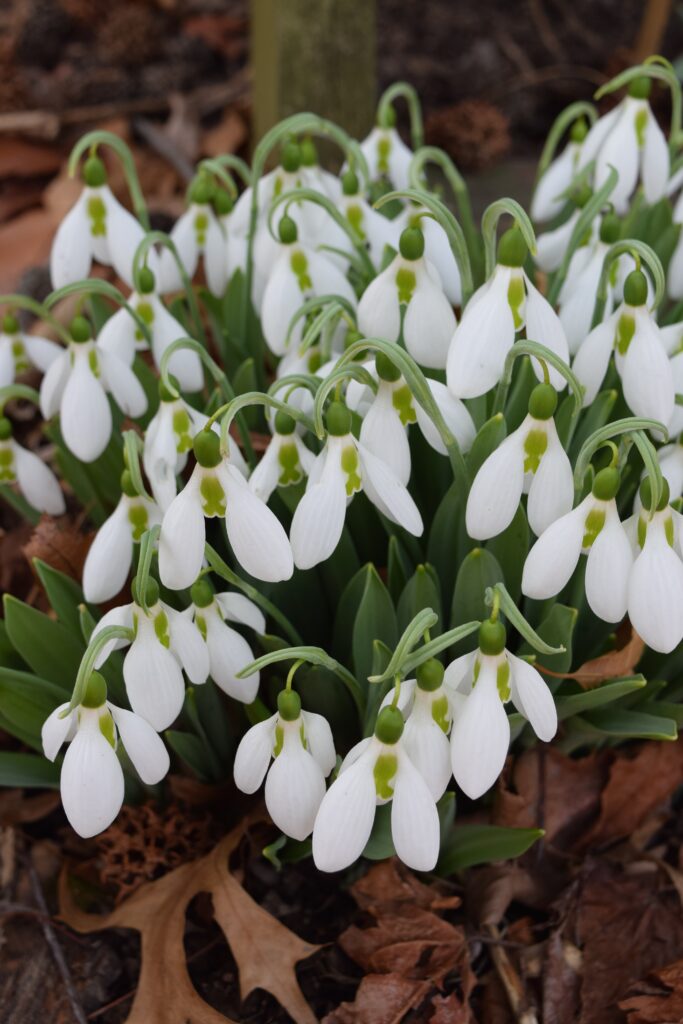

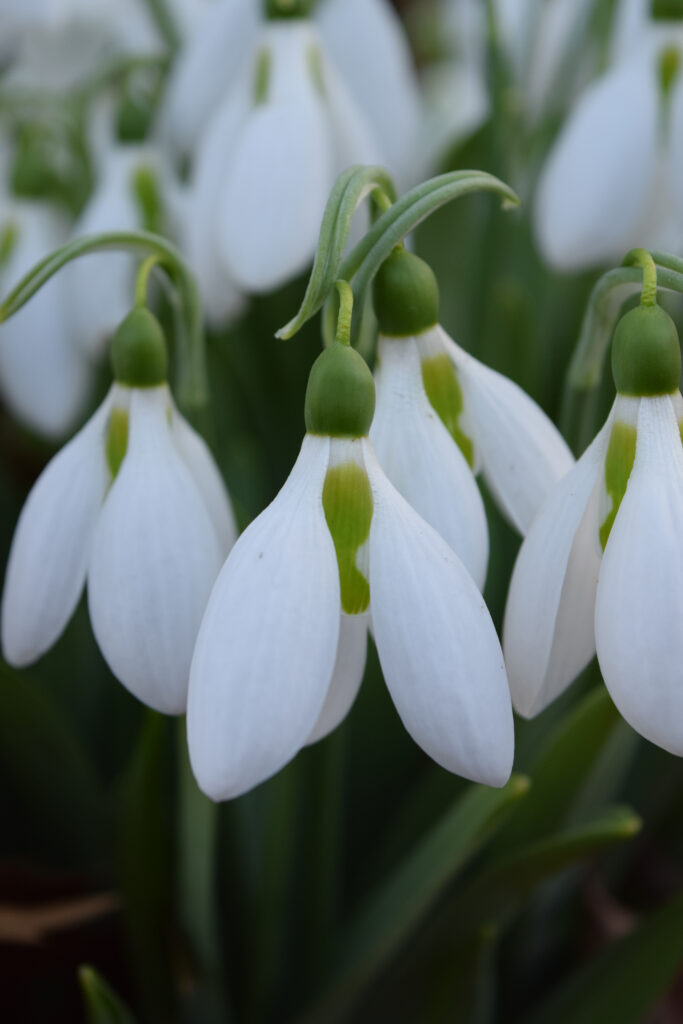


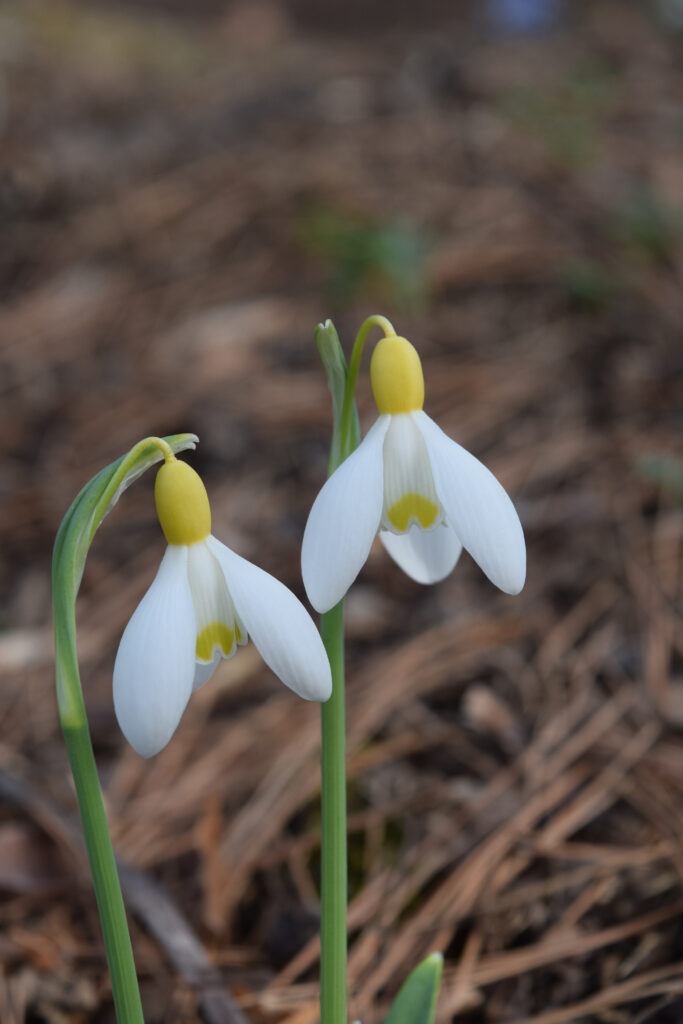
If you get the ‘snowdrop bug’ it doesn’t mean that you have the latest terrible infectious disease, it means that you spend the whole of the winter either waiting for your snowdrops to bloom or watching them. A true lover of snowdrops is called a ‘Galanthophile’. They usually know how many different cultivars they have in their garden, when they bloom, and exactly how many little green dots and greenish-washed sections each one has.
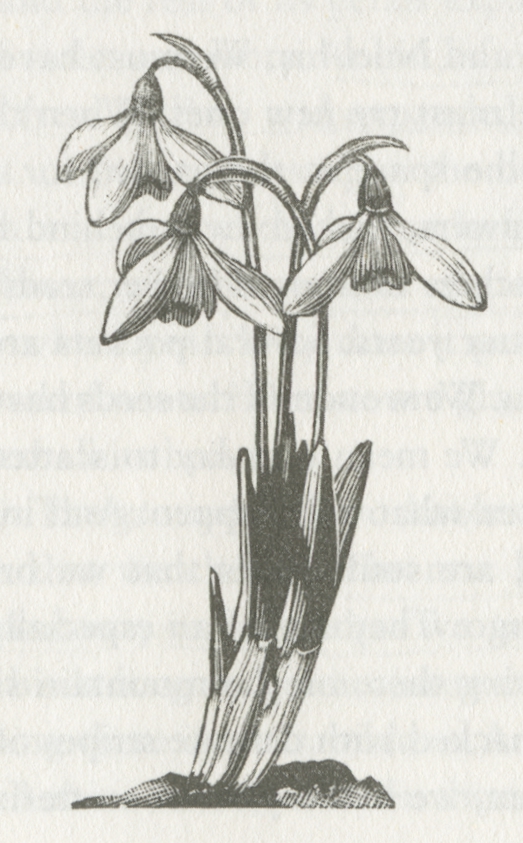
A beautiful woodcut of a snowdrop from Claire Leighton’s fantastic book “Four Hedges‘. A must-read gardening book for a wintery day with a good cup of tea.
Loving snowdrops also means that you can host or visit each other’s gardens on a winter day and talk about all things snowdrops while drinking hot tea or maybe something stronger. There is a lovely camaraderie about sharing a love of gardening and what else is there to do in February?

A nice hot cup of tea in my Emma Bridgewater snowdrop cup @emma_bridgewater
If you want to grow snowdrops and you are reading this from England or continental Europe – you are in luck. There are so many available species and cultivars to buy. If you garden in the United States, your choice is much more limited. However, there are some growers who can supply a few cultivars in the fall and a few others who ship gresh bulbs in the spring. The trouble is that snowdrop bulbs do not store out of the ground as well as some larger bulbs like daffodils. If possible, find a gardening friend and beg a little clump off the side of their established patch. Or do a swap if you both have some.
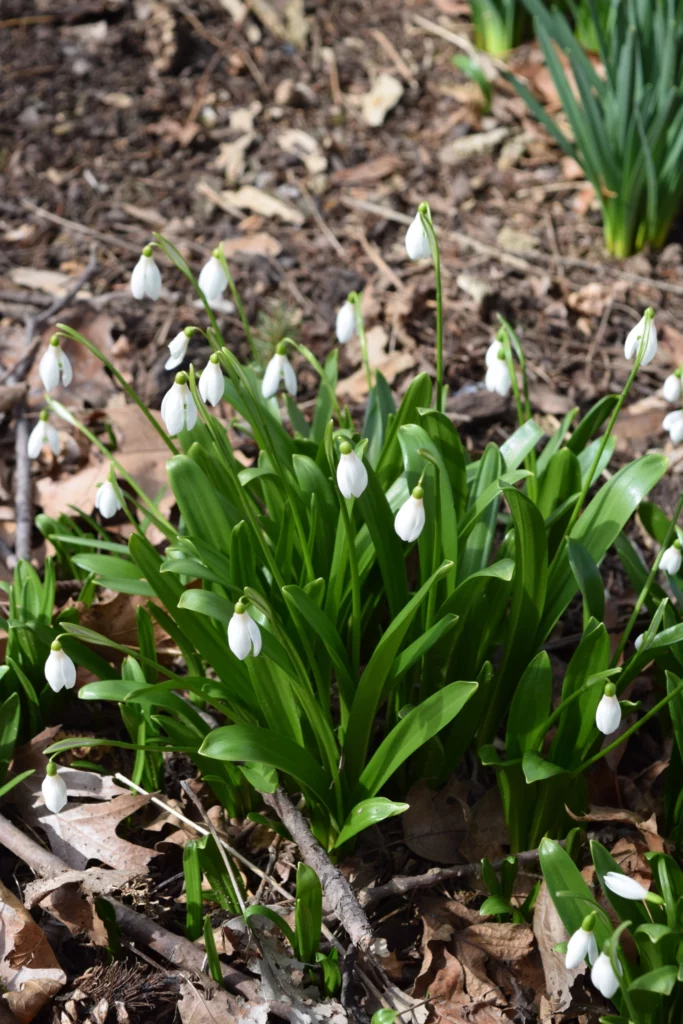
This green-leaved snowdrop thrives at Northview. It is sold by several names but it is probably Galanthus woronowii
What do I love about snowdrops? For a start, there is immense variability with flowers and leaves, even if it is extremely subtle. There are so few flowers out during this coldest of months. There is plenty of time to collect them, study them, and obsess over every little one. Pair this with the fact that they are so cute yet at the same time tough. It is a great combination in an animal, or a human, but in a flower, it is a winner.
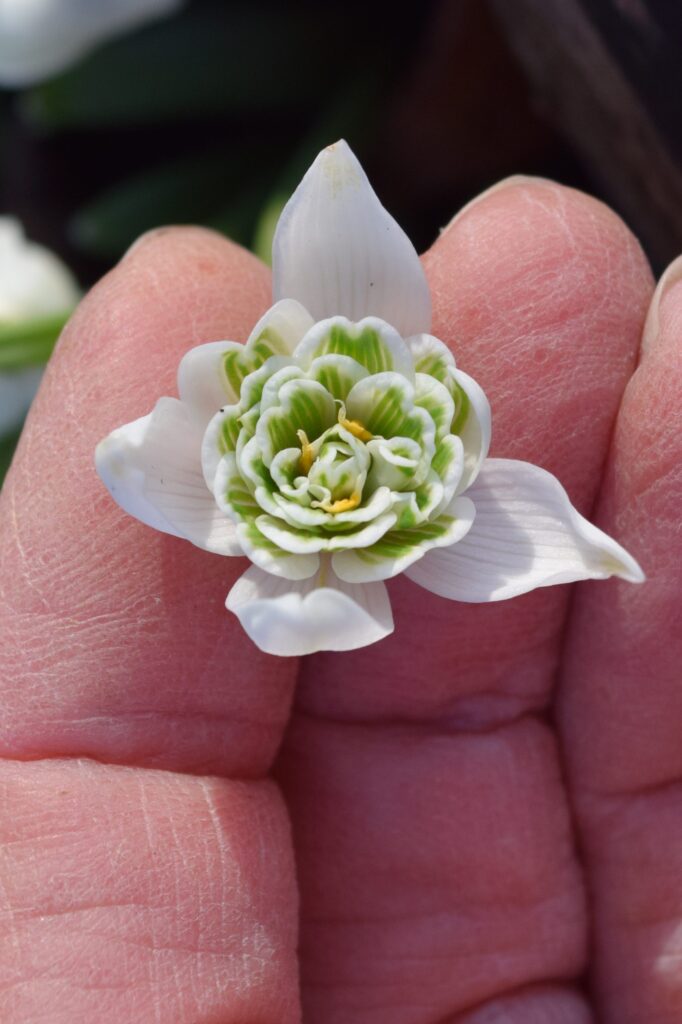
Holding a double-flowered snowdrop in your hand allows you to admire all of the intricate details
Up through the frozen or snowy soil pop pointed green leaf shoots, sometimes referred to as noses. Over the course of the next few weeks, the noses elongate, just like Pinocchio’s nose after he has told a lie. Rising up between the compact leaves there is a tiny pearl drop of white that will become the future flower. The flower stalk elongates and the flower head turns 180 degrees to become a dangling bud that gradually opens to reveal the fully formed flower.
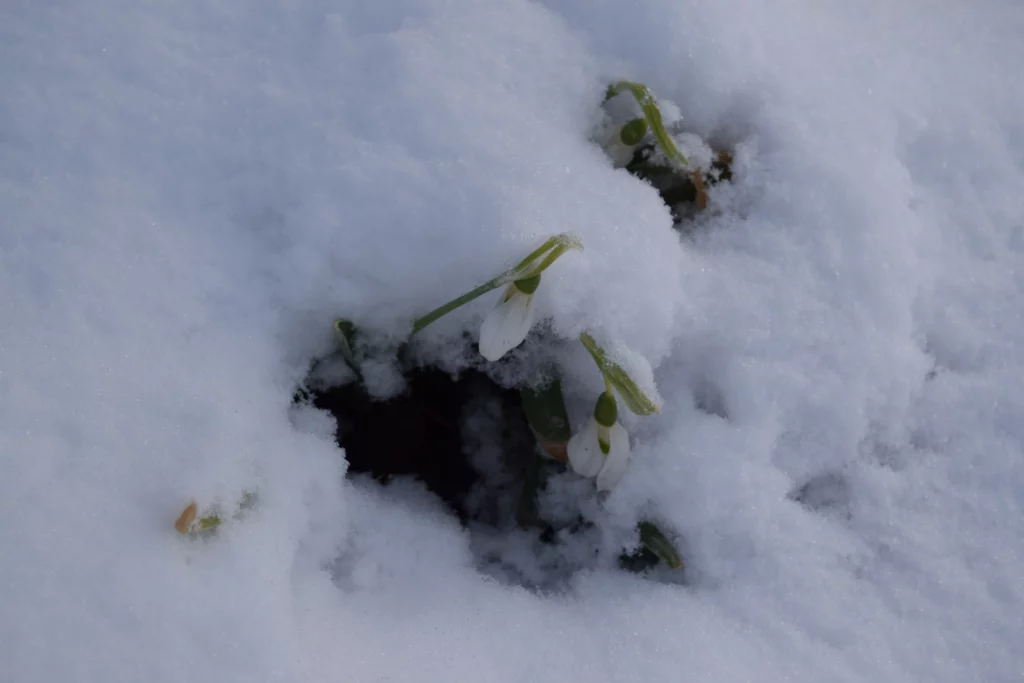
Snowdrops poking up through snow.
What do snowdrops look like?
Snowdrop flowers are all white, but beyond that, the variability comes from green, or occasionally yellow markings. Sometimes there are several green dots, or maybe only one. The leaves also vary from glaucous gray-green to bright green, narrow or wide, short or long. The leaves are all strap-shaped and even the Giant snowdrop leaf is only a foot long at the maximum.
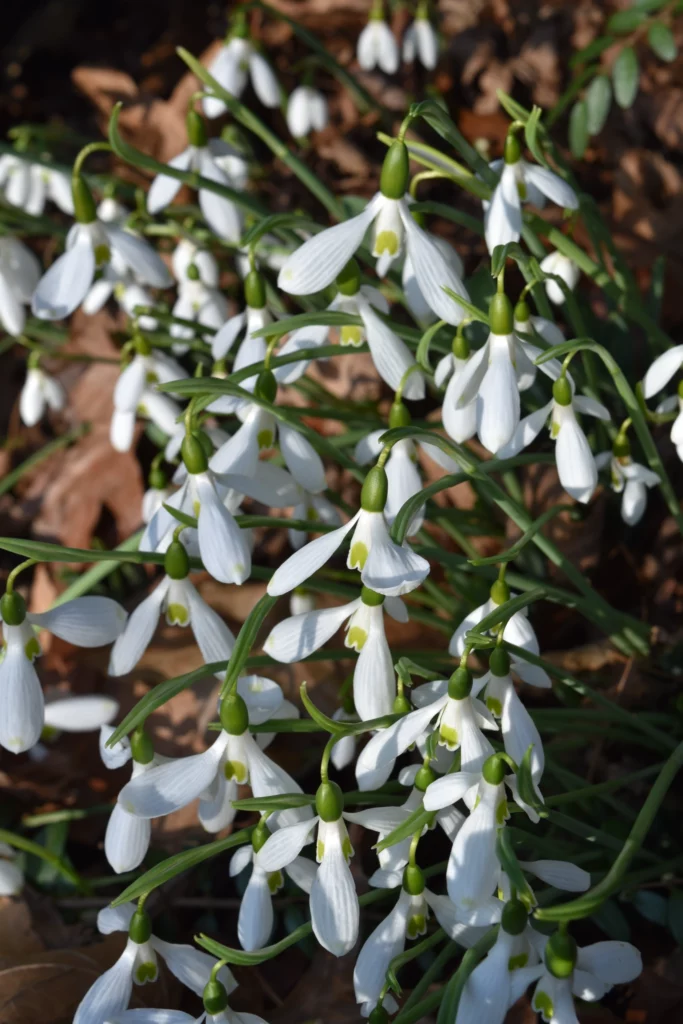
The snowdrop flower is in three parts like many bulbous flowers. There are three outer sections and a fused inner segment that forms a tube. What would be the petals and sepals on a different type of flower are referred to collectively as tepals. The yellow anthers may be visible slightly sticking out of the tube. These are the single snowdrop flowers.

This single snowdrop has three outer tepals (like petals) and a central core of tepals fused to make a tube
Then there are double flowers that have several layers of fluffy, petticoat-like petals. From the top view, the flower looks wider than the single flower, when you lift up the double ones you will see the complexity of the petal arrangement. Some of the doubles are sterile and do not produce pollen or seeds. There are some flowers where pollen is visible, but like many doubled flowers they are usually less attractive to pollinating insects. In my garden, I see bees on my snowdrops as soon as the temperature rises a little above freezing and the sun comes out to warm the blooms.
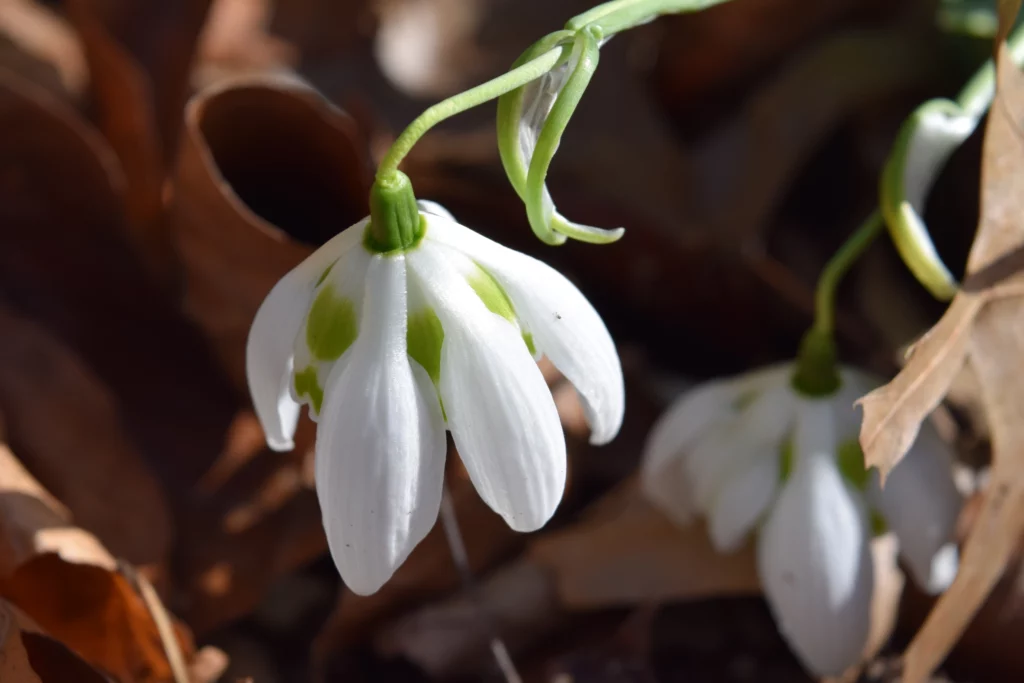
You can tell that this is a double snowdrop from the top by the wide flower. This one is odd and has more than three outer tepals
Some of the snowdrops have the added benefit of fragrance. I find that the universally admired cultivar Galanthus ‘S. Arnott’ has a pleasant honey-like fragrance. Some of the other types of snowdrops are also fragrant. Walking along a path beside patches of snowdrops you sometimes catch a waft of perfume carried on the air, especially if it is a sunny day.
Where do snowdrops grow best?
At Northview, we plant the giant snowdrop on the sunny side of a raised bank where it gets spring sunshine. This bank is not irrigated in the summer, so the bulbs remain moist but not wet. Too much moisture in the soil is the enemy of snowdrop bulbs, because they have a tendency to rot if irrigated. A position on a slope or bank provides the well-drained position that the giant snowdrop needs.

Snowdrops grow best in dappled shade beneath deciduous trees – Galanthus nivalis – Common snowdrop.
I have found that Galanthus nivalis, the common snowdrop can take more shade than Galanthus elwesii. In the wild, common snowdrop would be found in the dappled shade under deciduous trees. Mimic these conditions in your garden and provide them with the humus-rich, woodsy soil that they require. Let the tree and shrub leaves fall to the ground naturally in the autumn and decompose in place.
If you have a lot of fallen autumn tree leaves, or if they are large, like magnolia or oak, take the leaves off the bed in the fall and shred them up before putting them back on the bed. You could run over them on the lawn with a mulching lawn mower or use a garden shredder to chop them up. Alternatively, you can remove most of the leaves and create a leaf mold pile. After a few years of rotting down the leaf mold can be added back as a top dressing during autumn or winter (as long as the leaf mold is not frozen into a heap).
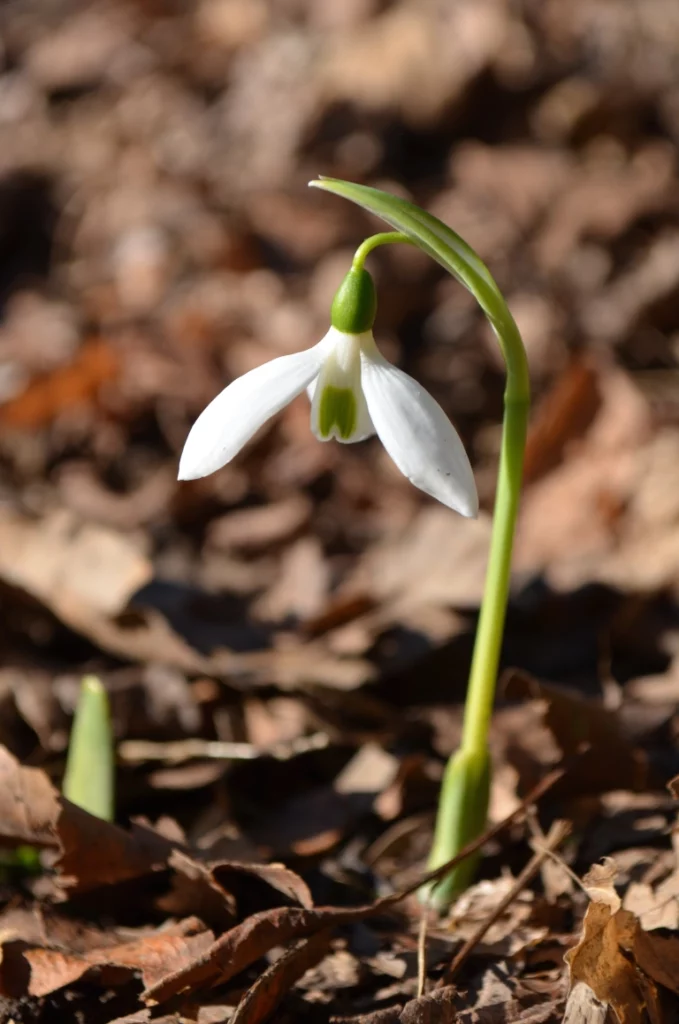
Fallen deciduous tree and shrub leaves rot down around the snowdrops and increase the organic matter in the soil
How do you increase your stock of snowdrops?
To make more snowdrops it is a good practice to divide congested clumps every three or four years. It is easiest to do this when you can still see where the leaves are. This is referred to as moving them in-the-green. Lever a small part off the edge of the grouping by using a hand trowel and maybe your fingers, or dig the whole clump out to separate it. Keep small groups of snowdrop bulbs together in clumps of 3-5. I have found that when they are re-planted in groups they establish themselves much faster than they do when you separate them into single bulbs.
After you dig them out get them back into the soil in their new positions as soon as possible. Wrap them in damp newspaper to send them off with a snowdrop-loving friend. Once planted give the bulbs a top dressing of leaf mold (not manure – unless it is aged). The organic material feeds the snowdrops slowly and mimics the natural woodsy soil of their preferred dappled shade location.

Some snowdrops look like they are having a bad hair day. This is Galanthus ‘Blewbury Tart’. It has flowers that face upwards, is double, and has extra green markings. This is a ‘love-it-or-hate-it’ snowdrop
There are many species and cultivars of snowdrops. I hope that you will look out for bulbs in the fall or look around your neighborhood and see if you can get a few bulbs in-the-green from a friend. This time next year, you too will be down on your hands and knees admiring little green dots on your cute white snowdrops.
Bye for now
Jenny Rose Carey
Next month:
I will share what seeds we are sowing at Northview and some of the new plants for 2023 that I am interested in adding to my garden.




Leave a Reply